K-12 Student Information Systems (SIS) streamline the management of student data, providing tools for attendance tracking, grades, and communications.
The top 5 K-12 Student Information Systems (SIS) solutions are PowerSchool, Veracross, Synergy SIS, Infinite Campus and FACTS SIS, as ranked by PeerSpot users in September 2025. PowerSchool received the highest rating of 0.0 among the leaders, is the most popular solution in terms of searches by peers, and holds the largest mind share of 12.8%.
These systems enhance educational environments by providing administrators, teachers, and parents with access to a comprehensive database covering student performance and administrative details. With a focus on data accuracy and ease of use, SIS allows schools to manage class schedules, student attendance, and academic records effectively.
What features should be considered?In districts like suburban schools, SIS implementations often focus on integrating existing systems with newer technologies to facilitate smoother transitions. Urban schools may prioritize robust communication tools due to larger student populations. Many private institutions leverage SIS for more personalized student tracking and performance assessments.
These systems significantly improve data management and accessibility for educational organizations, aiding in the achievement of academic and administrative goals.
| Product | Market Share (%) |
|---|---|
| PowerSchool | 12.8% |
| Synergy SIS | 8.4% |
| Aeries SIS | 7.0% |
| Other | 71.8% |



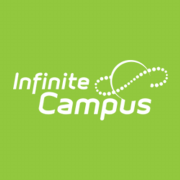







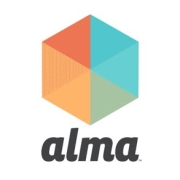








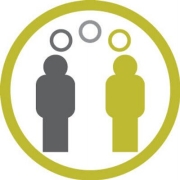








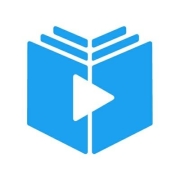


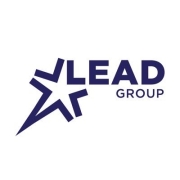
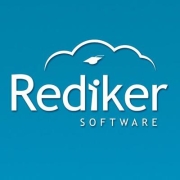


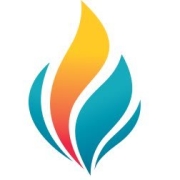
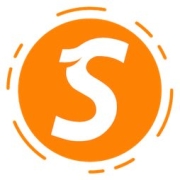

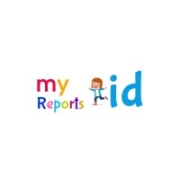
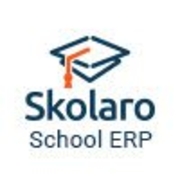
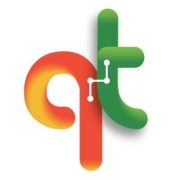


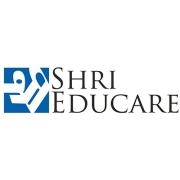
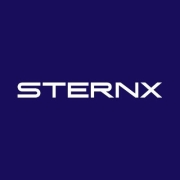

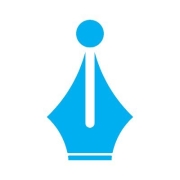



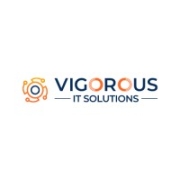
A K-12 Student Information System is a software tool that helps educational institutions manage student data, including enrollment, attendance, grades, and other administrative tasks. There are several types of SIS tools available in the market, each offering different features and functionalities to meet the diverse needs of schools and districts.
1. Traditional SIS: Traditional SIS tools are comprehensive systems that handle all aspects of student data management. They typically include features such as enrollment management, attendance tracking, grade management, report card generation, and parent communication. These tools are designed to streamline administrative tasks and provide a centralized database for student information.
2. Learning Management System (LMS): An LMS is a type of SIS tool that focuses on managing and delivering educational content. It provides features for creating and organizing online courses, assigning and grading assignments, and facilitating communication between teachers and students. LMS tools often integrate with traditional SIS systems to synchronize student data and provide a seamless learning experience.
3. Specialized SIS: Some SIS tools are designed to cater to specific needs or requirements of certain educational programs or institutions. For example, there are SIS tools specifically built for online schools, charter schools, or special education programs. These specialized tools offer features tailored to the unique needs of these programs, such as individualized education plans (IEPs) for special education students.
4. Parent Portal: Parent portals are SIS tools that provide parents with access to their child's academic information. These portals allow parents to view attendance records, grades, and assignments, and communicate with teachers. Parent portals enhance parent engagement and involvement in their child's education by providing real-time access to important information.
5. Mobile Apps: With the increasing use of mobile devices, many SIS tools now offer mobile apps that allow teachers, students, and parents to access student information on the go. These apps provide features such as attendance tracking, grade management, and communication tools, enabling users to stay connected and informed at all times.
6. Data Analytics: Some SIS tools offer advanced data analytics capabilities to help schools and districts analyze student performance and identify trends. These tools can generate reports and visualizations that provide insights into student achievement, attendance patterns, and other key metrics. Data analytics SIS tools enable educators to make data-driven decisions and implement targeted interventions to support student success.
In conclusion, there are various types of K-12 Student Information System tools available, each offering different features and functionalities to meet the diverse needs of educational institutions. Whether it's a traditional SIS, a specialized tool, an LMS, a parent portal, a mobile app, or a data analytics tool, these systems play a crucial role in managing student data and supporting effective teaching and learning.
K-12 Student Information Systems tools are software applications designed to manage and organize student data in educational institutions. These tools provide a centralized platform for administrators, teachers, and parents to access and update student information efficiently. Here is an overview of how K-12 SIS tools work:
1. Data Management: - SIS tools store and manage various types of student data, including personal information, attendance records, grades, schedules, and disciplinary actions. - The system allows authorized users to input, edit, and delete student data, ensuring accuracy and consistency across all records. - Data can be organized by grade level, class, or individual student, making it easy to retrieve and analyze information as needed.
2. Student Enrollment: - SIS tools streamline the enrollment process by providing online registration forms and automated workflows. - Parents can submit enrollment applications electronically, reducing paperwork and manual data entry for school staff. - The system tracks enrollment status, manages waitlists, and generates reports to monitor enrollment trends.
3. Attendance Tracking: - SIS tools offer attendance management features, allowing teachers to record student attendance electronically. - The system can generate daily attendance reports, track tardiness, and notify parents of absences. - Administrators can analyze attendance data to identify patterns and implement interventions if necessary.
4. Gradebook and Reporting: - SIS tools provide a digital gradebook where teachers can record and calculate student grades. - Teachers can customize grading scales, and weight assignments, and generate progress reports or report cards. - The system allows parents and students to access grades online, promoting transparency and communication.
5. Communication and Collaboration: - SIS tools facilitate communication between teachers, parents, and students through messaging features. - Teachers can send announcements, share assignments, and provide feedback to students and parents. - The system may also include features like online discussion boards or parent-teacher conference scheduling.
6. Integration with Other Systems: - SIS tools can integrate with other educational software, such as learning management systems or assessment platforms. - This integration allows for seamless data transfer and eliminates the need for duplicate data entry. - SIS tools may also integrate with student information exchange systems to securely share data between schools or districts.
In summary, K-12 Student Information Systems (SIS) tools simplify and automate various administrative tasks related to student data management. These tools enhance efficiency, accuracy, and communication among stakeholders, ultimately supporting the overall educational experience.
K-12 Student Information Systems (SIS) tools are software applications designed to manage and organize student data in educational institutions. These tools offer a wide range of benefits for schools, teachers, administrators, and parents. Here is an overview of the key advantages of using K-12 SIS Tools:
Efficient Data Management: - Centralized Database: SIS tools provide a centralized database to store and manage student information, including personal details, attendance records, grades, and disciplinary actions. - Streamlined Processes: These tools automate various administrative tasks, such as enrollment, scheduling, and report generation, reducing manual effort and saving time. - Data Accuracy: By eliminating manual data entry and reducing human errors, SIS tools ensure accurate and up-to-date student information.
Improved Communication and Collaboration: - Parent-Teacher Communication: SIS tools enable seamless communication between parents and teachers through features like online portals, messaging systems, and progress reports, fostering better engagement and involvement. - School-Home Connection: Parents can access real-time information about their child's academic performance, attendance, and behavior, allowing them to stay informed and actively participate in their child's education. - Teacher Collaboration: SIS tools facilitate collaboration among teachers by providing a platform to share resources, lesson plans, and student data, promoting a more cohesive and coordinated approach to education.
Enhanced Student Performance Tracking: - Academic Progress Monitoring: SIS tools allow teachers to track student progress, identify areas of improvement, and provide timely interventions to support individual learning needs. - Data-Driven Decision Making: By analyzing student data, SIS tools enable administrators and teachers to make informed decisions regarding curriculum, instructional strategies, and resource allocation, leading to improved student outcomes. - Individualized Learning: SIS tools support personalized learning by providing insights into student strengths, weaknesses, and learning styles, enabling teachers to tailor instruction to meet individual needs.
Efficient Administrative Processes: - Attendance Management: SIS tools automate attendance tracking, reducing paperwork and ensuring accurate records for compliance and accountability purposes. - Gradebook Management: These tools simplify grade recording, calculation, and reporting, making it easier for teachers to assess student performance and generate progress reports. - Timetable and Scheduling: SIS tools streamline the process of creating class schedules, managing room assignments, handling course registration, optimizing resource utilization, and minimizing conflicts.
In conclusion, K-12 Student Information Systems (SIS) tools offer numerous benefits for educational institutions, including efficient data management, improved communication and collaboration, enhanced student performance tracking, and streamlined administrative processes. By leveraging these tools, schools can enhance their overall efficiency, effectiveness, and student outcomes.
K-12 SIS solutions enhance student engagement by providing teachers and administrators with tools to better understand student needs. They offer features like analytics dashboards and real-time reporting, which help identify students at risk and tailor personalized interventions. The easy access to data enables educators to modify teaching methods, keeping students actively involved. SIS platforms also often have communication tools that keep students informed and connected with their learning environments.
What are the key features to look for in a K-12 SIS?When selecting a K-12 SIS, consider features such as integration capabilities with other tools, user-friendly interfaces, robust reporting, and analytics tools. Look for platforms that offer secure data management and compliance with educational regulations. Additionally, consider solutions that provide a comprehensive suite of functionalities including attendance tracking, gradebook management, and parent-teacher communication channels, all tailored to enhance school management efficiency.
How does a K-12 SIS ensure data security and privacy?A K-12 SIS ensures data security and privacy by complying with regulations like FERPA. These systems implement strong encryption protocols, regular security audits, and access controls to protect sensitive information. Choose an SIS that offers data breach response plans and user authentication features to ensure that only authorized personnel can access confidential information, ensuring a secure digital environment for your educational institution.
What are the benefits of cloud-based K-12 SIS solutions?Cloud-based K-12 SIS solutions offer scalability, allowing schools to easily adjust resources based on needs. They provide cost-effective alternatives to on-premises systems by minimizing hardware costs and reducing IT maintenance requirements. With cloud-based solutions, you benefit from regular updates, improving system reliability and the delivery of new features. Remote access means that data can be accessed securely from anywhere, facilitating more flexible learning environments and administrative processes.
How can a K-12 SIS facilitate better parent-teacher communication?K-12 SIS platforms often come with communication features like portals or mobile apps, enabling seamless interaction between parents and teachers. By providing real-time updates on student progress, attendance, and upcoming events, SIS platforms help keep parents informed and engaged in their children's education. This enhances collaboration, allowing parents to participate more actively in school communities and contribute to their children's success.